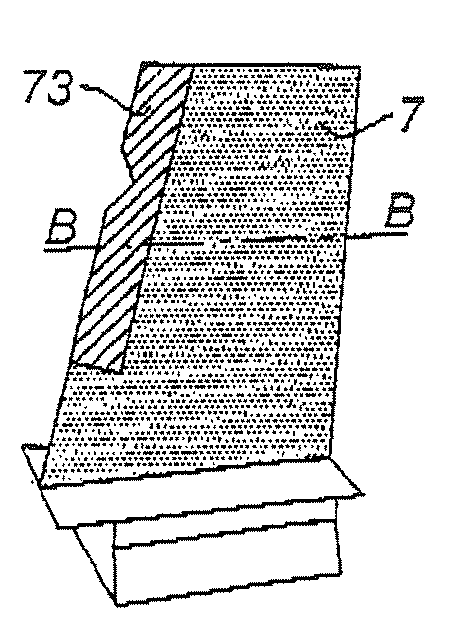Metal component treated by putting sublayers in compression, and method of obtaining such a component
a metal component and sublayer technology, applied in the field of metal component treatment, can solve the problems of long implementation time, inability to scan the entire surface to be treated with laser spots in a single sequence, and inability to achieve the effect of reducing the effect of tensile stress and preventing large tensile gradients
- Summary
- Abstract
- Description
- Claims
- Application Information
AI Technical Summary
Benefits of technology
Problems solved by technology
Method used
Image
Examples
Embodiment Construction
[0032]As may be seen in FIG. 1, a blade 1 comprises a root 3, a platform 5 and an airfoil 7. The blade is mounted via the root 3 on the periphery of a rotor disk in a suitable housing. The platform provides the continuity of the annular duct in which the gas stream is guided.
[0033]The airfoil 7 of aerodynamic shape is swept by the gas stream. It is this part of the blade that is exposed to the external stresses, which have an effect on the lifetime. The leading edge LE and trailing edge TE are possibly exposed to violent shocks, such as from foreign bodies ingested by the motor and striking the fan blades. These impacts may have a depthwise effect in the peripheral zones of the airfoil. Other impacts, such as those of erosive particles, are more superficial, but are found in more extended zones of the airfoil in the form of scratches and abrasions. The residual stresses generated by the peening help to limit damage and crack propagation and to increase the fatigue resistance—their p...
PUM
| Property | Measurement | Unit |
|---|---|---|
| thickness | aaaaa | aaaaa |
| depths | aaaaa | aaaaa |
| compressive stresses | aaaaa | aaaaa |
Abstract
Description
Claims
Application Information
 Login to View More
Login to View More - R&D
- Intellectual Property
- Life Sciences
- Materials
- Tech Scout
- Unparalleled Data Quality
- Higher Quality Content
- 60% Fewer Hallucinations
Browse by: Latest US Patents, China's latest patents, Technical Efficacy Thesaurus, Application Domain, Technology Topic, Popular Technical Reports.
© 2025 PatSnap. All rights reserved.Legal|Privacy policy|Modern Slavery Act Transparency Statement|Sitemap|About US| Contact US: help@patsnap.com


